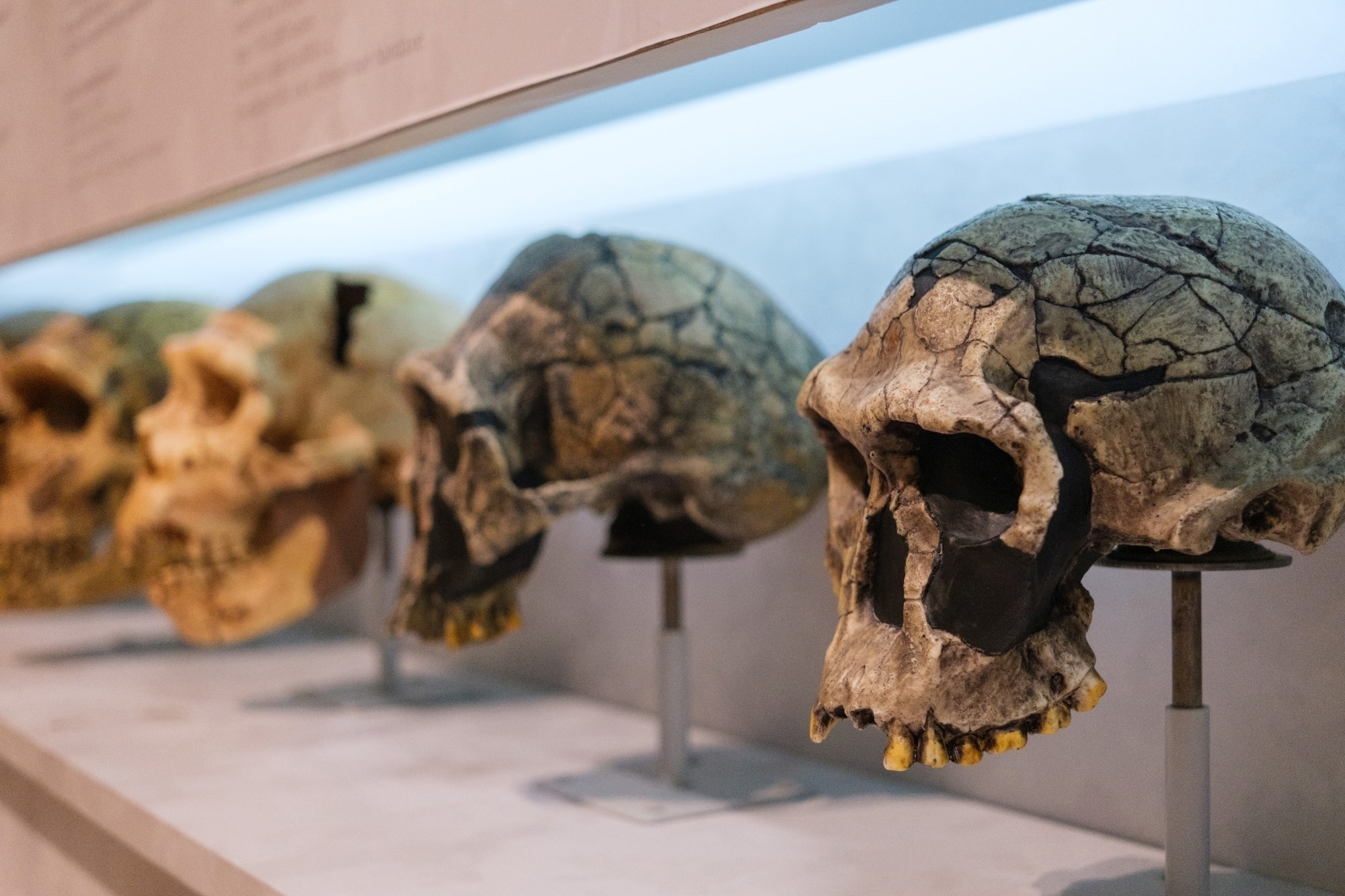 By Pooja Toshniwal PahariaReviewed by Lauren HardakerMay 28 2025
By Pooja Toshniwal PahariaReviewed by Lauren HardakerMay 28 2025A recent study published in Nature Genetics presents Cobraa, a coalescence-based hidden Markov model (HMM) designed to help disentangle the complexities of human evolutionary history.
 Image credit: Rebel Red Runner/Shutterstock.com
Image credit: Rebel Red Runner/Shutterstock.com
Improvements in ancient deoxyribonucleic acid (DNA) extraction technologies have enabled detailed genetic analysis of human evolution during both the Pleistocene era—the last ice age—and the Holocene era, which continues today. These periods represent distinct stages in Earth's climate and human history. Evolutionary evidence suggests that human populations have separated and admixed multiple times in the past.
Analysis of high-quality genomes from Denisovans and Neanderthals shows gene flow from these archaic humans into non-African populations, and also suggests gene flow from anatomically modern humans into Neanderthals.
Models that incorporate ancestry from previously unknown archaic populations during the past 100,000 years better explain polymorphism patterns in African populations than those that do not. However, the presence of even older admixture events remains unclear.
The Cobraa model identifies deep ancestral structure, comprising population splits and admixture, shared by modern humans. Analyzing this structured ancestry could improve our understanding of human evolutionary genetics.
About the Study
In this study, the researchers introduce Cobraa, a coalescence-based HMM that reconstructs ancestral admixture events and changes in population size in modern humans.
The team modeled two populations: a majority population (A) and a minority population (B), both descending from a common ancestor. They calculated coalescence rates under the assumption that population sizes remained constant and used statistical models to infer genomic regions in modern humans that are more closely related to either Denisovans or Neanderthals.
Cobraa was applied to high-quality, diploid whole-genome sequence data from the Human Genome Diversity Project (HGDP) and the 1000 Genomes Project (1000GP). To validate the model, Cobraa simulations were compared to unstructured models generated by the pairwise sequentially Markovian coalescent (PSMC), using a constant mutation rate and similar coalescence rates but different population sizes.
The researchers also developed Cobraa-path, an extension of Cobraa that identifies genomic regions where ancestry passes partially or entirely through population B. In this model, the hidden states represent the lineage path through the structured model before coalescence.
Simulations included 10 replicates with 16,000 individuals in each of populations A and B. The researchers simulated inverse coalescence rates (ICR) with a 30 % admixture fraction while keeping the sequence length, mutation rate, and recombination rate constant.
They also applied Cobraa to genomes from other species—including the parti-colored bat (Vespertilio murinus), the common dolphin (Delphinus delphis), Nigeria-Cameroon chimpanzees, and gorillas—to evaluate the model’s versatility.
Results
The simulations suggest that the two ancestral populations diverged more than 1.5 million years ago, with a deep split occurring around 1.5 million years ago (1.5 Ma). An admixture event occurred around 300,000 years ago (300 ka), where the populations rejoined in an 80:20 ratio.
A bottleneck was observed in population A shortly after divergence, which may reflect a founder effect possibly linked to migration or physical isolation, contributing to present-day human genetic diversity.
The genetic sequences from population B showed correlations with the distance to coding regions, suggesting that when DNA from this group was located near functional genes, it may have caused harmful mutations and was therefore removed over time.
Additionally, a strong correlation was found between majority ancestry and divergence from both Denisovans and Neanderthals. The results suggest that population A contributed most to the archaic human lineage, offering further insight into evolutionary relationships between modern humans and other hominins.
Cobraa-inferred changes in population size aligned well with those inferred by PSMC in modern humans. The researchers also observed splits between eastern and western gorillas around 150,000 years ago, consistent with structured population models. However, the model was less effective for species like the Nigeria-Cameroon chimpanzees, where continuous gene flow between subspecies limited its applicability
Download your PDF copy now!
Conclusions
The Cobraa model provides insights into structured population dynamics by identifying ancestral population splits and admixture events. Compared to previous models such as PSMC, Cobraa offers improved resolution for studying genetic data across species. Although mutation and recombination rates are not uniform across the human genome, these factors had minimal impact on the model’s performance, indicating its robustness.
Homo heidelbergensis and Homo erectus may be potential candidates for the ancestral populations modeled as A and B within Africa. The study also suggests that the ancestors of Denisovans and Neanderthals were already present in Eurasia prior to the expansion of modern humans into the region.
Future research should aim to determine whether gene flow from modern humans into Neanderthals originated from population A or B, and how this relates to earlier gene flow into Denisovans.
Journal Reference
Cousins, T., Scally, A., Durbin, R. (2025). A structured coalescent model reveals deep ancestral structure shared by all modern humans. Nat Genet. DOI: https://doi.org/10.1038/s41588-025-02117-1, https://www.nature.com/articles/s41588-025-02117-1